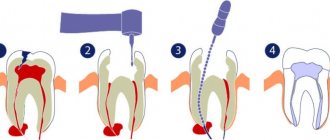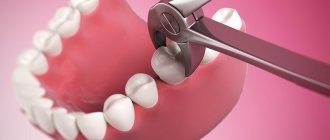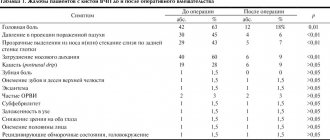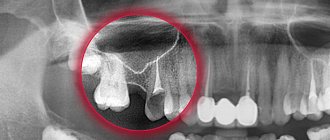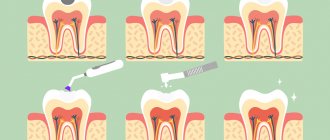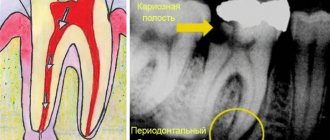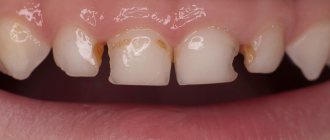Uncontrolled and in 100% of cases asymptomatic appearance of tumors in the sinuses is the main danger for all patients. The horror of the situation is that Russia has not adopted a protocol for annual “check-ups” with a computed tomography scan of the paranasal sinuses, only a visual examination. The hope for ENT doctors who see patients with related conditions is very weak, since referrals for CT scans are strictly regulated, it is simply impossible to sign up through the compulsory medical insurance system, sometimes this opportunity is mockingly provided after several months, and more often patients simply ignore this diagnosis after a series of difficulties with making an appointment .
Causes of neoplasms
The growth of neoplasms in the maxillary sinuses occurs for three main reasons:
Infection
Chronic inflammatory process of rhinogenic (ENT) origin, for example, otitis, sinusitis, in which the patient is not treated by specialists, goes to work, actively takes pills from advertising and is “treated” with advice from the Internet. Over time, the immune resource runs out and an uncontrolled process begins against the background of immunity weakened by many years of infection.
Odontogenic causes associated with teeth
Provoking dental factors:
- untimely treated teeth, hidden cysts. Over the years and decades, cysts gradually take over the entire surrounding bone, gradually creeping into the maxillary sinus - the most common picture observed daily in our Center. Old cysts on the root of the tooth, carefully cultivated over the years, most often provoke the transition of inflammation to the sinus with the appearance of huge tumors;
- Various therapeutic and surgical manipulations with mechanical or chemical damage to the sinus, which I described in detail above, can involuntarily provoke tissues that gradually provoke the appearance of neoplasms in the maxillary sinus, such as cysts and polyps;
- penetration of foreign bodies, everything is the same here - a broken tooth root has penetrated into the sinus, it provokes the growth of soft tissues, then everything is the same, infection, but only in the center there is a foreign body.
Injuries
Automobile injuries, household injuries, and sports injuries can also provoke the appearance of tumors, polyps and mucous cysts of the maxillary sinus.
What are the symptoms of a cyst in the nose?
A cyst of the upper jaw does not lead to strictly specific symptoms, and sometimes even occurs without obvious manifestations. Complaints from patients with this pathology include:
- Nasal congestion, clinical signs of chronic rhinitis.
- Unpleasant sensations, a feeling of fullness and pressure in the projection of the maxillary sinus (on the side of the cyst). Discomfort often increases when bending forward.
- A feeling of pressure from the inside on the eyeball, and with large neoplasms, transient double vision may occur.
- Recurrent headaches with a predominant localization in the forehead and bridge of the nose. Their appearance is mainly associated with impaired ventilation of the paranasal sinuses.
Reliable diagnosis is based on visualization of the maxillary sinus and its contents. Traditional examination methods include radiography of the facial part of the skull. Currently, CT scans of the paranasal sinuses are widely used.
Types of neoplasms
Practice and observations show that the following neoplasms, conditions and diseases can develop after provoking factors:
- Mycetomas Hidden, incredibly long-lasting and difficult to treat fungal infections of the membranes of the maxillary sinus. Although these processes are often non-invasive in nature, without germination into the mucous membrane and without huge sizes and volumes, like cysts, such fungal processes are difficult to cure and remain dormant and asymptomatic for a long time. It is sad that it is impossible to give the patient a clear prognosis for the timing of treatment.
- Polyps The most frequently detected benign formations, detected in most patients, consist of cells of the mucous membrane of the maxillary sinus in half with tissues affected by infection with connective elements grown inside. They can grow in clusters, groups, are easily removed, rarely grow to a huge size, very good prognosis and quick cure.
- Cysts The most unpredictable tumors of the sinuses, usually spherical growths of the mucous membrane of the maxillary sinus with purulent fluid produced as the tumor grows and is absorbed by the surrounding bone during such active growth. Active growth often starts from inflammation at the root of the tooth, from periodontitis, which, without treatment, slowly became a cyst. When the cyst grows to a size of more than 5 mm, its growth can continue upward, towards the direction of least resistance - and this is usually the maxillary sinus. Then the cyst at the root stops bothering the patient, since there is no tension in the tissues - the cyst has already gone into the sinus. This is the main difficulty, nothing bothers the patient, and the cyst grows in free conditions of the sinus for many years. Sometimes the causative tooth begins to hurt, the tooth is removed, and the cyst breaks off and begins to develop in the sinus on its own.
- Mucocele A benign cyst-like formation filled with fluid or mucus. It is rare, but can reach significant sizes and completely block communication with the nasal passages. It is rare and easy to operate.
Neoplasms grow silently inside the sinus for years, without any symptoms or pain, do not manifest themselves in any way, or sometimes a clinical picture with symptoms of sinusitis occurs. These neoplasms are more often discovered by chance on a computed tomogram; on a regular x-ray, soft tissue neoplasms are invisible .
The absence of pain, redness, swelling and any manifestations is the main danger; over time, cysts of the maxillary sinus can take up all the free space in the sinus, injure and deform neighboring anatomical structures, dissolve the jaw bone around them and kill the roots of neighboring teeth.
Why you should entrust your treatment to the ENT Department of Dentistry
ENT dentistry combines two areas of medical services and treatment options - otolaryngology and dentistry . This is a modern format for the clinic’s work on comprehensive rehabilitation in the treatment of traumatic and inflammatory processes in the upper jaw, penetrating into the maxillary sinus or passing along its borders.
We carefully approach statistics and regret to report that the main provider of patients are our colleagues who are stuck in an unsuccessful treatment plan; there are not many initial visits to the clinic. Fortunately, correct and timely suspended non-ideal treatment can always be reversed from an unsuccessful outcome. I am very grateful to our colleagues who do not hesitate to send us such complex patients, despite some reputational damage.
According to our statistics, 70% of patients turned to our Center after unsuccessful conservative treatment of cysts by ENT doctors, an endless number of traumatic “punctures” of the maxillary sinus, or attempts to find and persuade dentists not to remove the dental cyst, but to treat the cyst without removal.
In response to this request, many years ago, ENT dentistry was identified by us as a separate important area of clinical work.
The Center for Private Dentistry “Doctor Levin” has been specializing in providing care to patients with combined ENT and dental pathology for many years. Medical and surgical treatment programs are carried out by candidates of medical sciences, maxillofacial surgeons with ENT training.
How we treat
Treatment is carried out only comprehensively and strives to be carried out in one visit , simultaneously:
- Hygienic cleaning and dental treatment We prepare the oral cavity for sterile surgical work. We treat compromised roots. Operations are performed only in a sanitized oral cavity to avoid re-infection.
- The operation is carried out in the surgical department, subject to all conditions of sterile operating rooms. Ultrasound removes inflammatory processes, removes roots that provoked or supported inflammation, eliminates all inflammatory elements, removes cysts, polyps, mucoceles, and foreign bodies.
- Orthopedics Temporary crowns or any other orthopedic elements are fixed to mask the work performed. We do everything to avoid sending the patient home without teeth!
We do not welcome radical and punitive surgery!
Rest assured that after surgery we will never keep you in the hospital unless absolutely necessary.
Levin Dmitry Valerievich Chief physician and founder of the Doctor Levin center
Rehabilitation
The recovery period depends on the type of surgery. With a classic maxillary sinusotomy, rehabilitation takes 2-3 weeks, one of which will have to be spent in a hospital. During this time, swelling of the face, numbness of the tissues gradually disappears, and the sense of smell is restored. Daily rinsing and taking antibiotics and painkillers are necessary. After the tissue has healed, the sutures in the oral cavity are removed.
After endoscopic maxillary sinusotomy, you only need to stay in the hospital for 2-3 days. In the postoperative period, according to indications, the sinus is washed through the dilated anastomosis and the puncture site is treated. The tissues heal faster, there is no need to remove stitches, because... They are not here.
After discharge, the patient must use vasoconstrictor drops and carefully perform hygienic oral care. During the recovery period, thermal procedures, hypothermia, physical activity, consumption of spicy and hot foods, as well as alcohol are prohibited.
Maxillary sinusotomy allows you to cope with chronic inflammation and restore impaired nasal breathing. At the Ear, Nose and Throat Clinic, surgery is performed using the latest generation equipment in accordance with the latest achievements in otolaryngology. Sign up for a consultation to get rid of chronic problems!
Seeing a doctor in a timely manner will help maintain your health.
Don't delay treatment, call right now. We work around the clock. tel. (24 hours a day)
Hospitalization
The day hospital at our Center is a post-operative support service for patients. Necessary if the patient has concomitant cardiac issues, such as hypertension, arrhythmia, AOS, etc.
Gentle ultrasound surgical protocols for low-impact PiezoSurgery operations in combination with microscopic surgery performed by operating teams consisting of pairs of the most experienced surgeons at our Center allow you to carry out treatment so delicately that you will not need mandatory hospitalization, which is so popular in Moscow hospitals.
All operations are performed only in medicated sleep, without pain or nervous overload.
The treatment will be carried out with respect for your personal time, in a short time and at a comfortable time, the operating teams and anesthesiology department work seven days a week and holidays.
When is surgery needed to remove a maxillary sinus cyst?
Formed cysts are often not prone to regression, and conservative therapy is also usually not able to lead to their disappearance even after the elimination of inflammation. Therefore, the only effective treatment method is surgical removal of the cyst in the sinus.
Indications for surgery include:
- Signs of suppuration of the contents of the cyst.
- Progressive growth of the tumor.
- The diameter of the cystic cavity is more than 6 cm.
- The appearance of double vision (diplopia) and blurred vision, which is a sign of excessive pressure of the formation on the bottom of the orbit.
- Often recurrent or continuous rhinosinusitis, chronic nasal congestion.
- Significant discomfort experienced by the patient even with a small tumor size.
Surgery to remove a cyst is usually performed as planned. The decision on surgical treatment is made by the ENT doctor after examining the patient and assessing the clinical situation.
